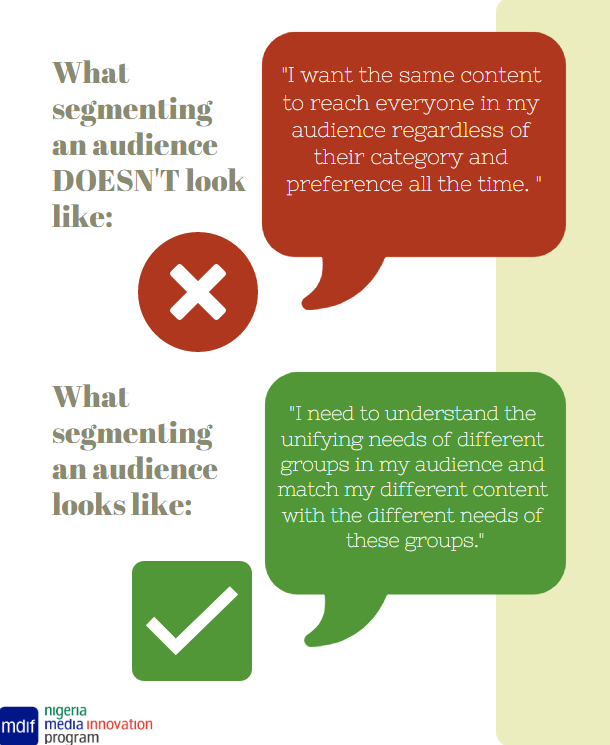By Oluwadara Ajala
“Without data, you’re just another person with an opinion.” – Edwards Deming
In today’s ever-changing world, publishers must not only create great content, but they also need to deliver a personalized experience to effectively attract and retain audiences.
This means that as publishers, you will need to get beyond having an opinion, to having a rough idea of how people use your platforms and how they interact with you. This process helps you to understand what your audience looks like, explained data journalist, Adam Oxford, in a virtual workshop for NAMIP participants in December last year.
What is audience analytics and segmentation?
Audience analytics basically involves continuously studying the group of people that consume your content or interact with your work. The outcome of any audience analysis exercise should establish a clear, detailed, and realistic picture of the audience. As a result, your content or products are more likely to resonate with the audience and lead to the desired engagement and audience loyalty.
Audience segmentation as an extension is a key activity within an audience analysis. It involves categorizing a large audience into smaller groups of people – or segments – who have similar needs, values, or characteristics. Segmentation recognizes that different groups have different needs and thus will respond differently to media products.
Why Segment an Audience?
According to Oxford, the way we think about our audience, may not often reflect what the audience is. Segmenting an audience gives us the opportunity to see where the issues are in other to save time and energy and avoid trying to fix a problem that may not exist. The key points from an audience analysis and segmentation exercise should help you understand what your data is about and the way your audience uses your News product.
What then are some tips and tricks to understanding and segmenting your audience?
Adam Oxford outlines some tips and tricks to help when trying to segment your audience; tools abound to aid publishers who seek to understand audiences. Adam Oxford highlighted some of these tools and shared
A top tool used by many publishers is Google Analytics. This may be because it is:
- Free
- Well understood or easier to understand and;
- Has lots of advanced features.
Generally, Google analytics Gives you the ability to measure overall performance and evaluate experiments.
Adam also shared a few downsides to the platform including the fact that support might be limited, and the best views/features are not always obvious.

Some common metrics to consider when using audience analysis tools like Google Analytics
A couple of common metrics to consider when using audience analysis tools:
- Bounce Rates: an important metric for user engagement. Bounce rate measures the percentage of people who come into a site from a land-on page usually Google or a search engine, read that page and exit without doing anything else. It tells publishers whether or not readers are hanging around after reading that page and what they’re doing.
- Average time on page shows how long people spend reading a story.
The most common ways we segment audiences are as:
- Casual users – who visit your site or platform once a month period. They often almost always arrive from another source such as Search or social media. Audience engagement goals should include always asking; what can you do to make casual users “sticky” and come back?
- Loyal users – they visit your site up to once a week (2-5 times a month). They know your brand and are likely to click on links when you appear in their feeds but are not highly engaged.
- Brand lovers – these users visit your site and platforms more than six times a month (more than once a week). These are your superfans who will promote you, and possibly pay you.
Other things to consider when segmenting audiences include the frequency of publication. For example, a monthly publication with monthly visitors will need to be classified as loyalists, etc. Also, important to consider that these segments may differ depending on your platform and the kind of content published.

